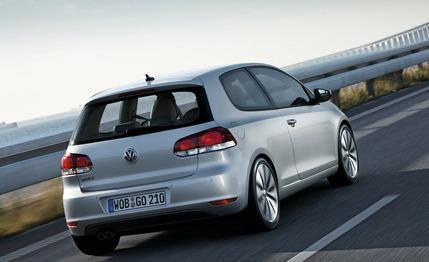
 First Drive Review
First Drive Review
In America, the Rabbit is a trendy, economical urban runabout—little more than a niche car in a market where the Jetta rules VW’s sales roost. But in Europe, where it remains known as the Golf, the diminutive Volkswagen hatchback defines its class. It is VW’s most important model on the Continent, a fact that the company was not trying to hide during the new car’s elaborate international press launch in Reykjavík, Iceland. The Golf is the quintessential Volkswagen, and the new version is spearheading VW’s highly ambitious drive to replace Toyota as the global number one carmaker by 2018.
A Disappointment from the Beginning in Europe
Even though it has been just five years since the fifth-generation Golf was launched in Europe—and not even three years since its U.S. debut as a Rabbit (it is increasingly likely the Golf name will return for this generation)—this replacement doesn’t come a moment too soon. VW sources privately concede the Golf V, as the car is referred to in Europe, was expensive to build but felt cheaper than the Golf IV it replaced. Its looks were debatable. “The Golf V had too many fathers,” explains a high-ranking company executive. “It was nobody’s particular child.”
Dealers and customers complained about the perceived quality. And when VW asked how to do it better, the Golf IV kept coming up as a shining example. “The original Golf and the Golf IV were clear inspirations for the Golf VI,” said VW chairman Martin Winterkorn in Iceland. Incidentally, those two models are still making money for the company: the Golf I is alive and well in South Africa, where it faithfully carries on under the CitiGolf moniker, and the Golf IV is available in Latin America, Canada, and China. The Rabbit/Golf V, by contrast, is already out of production.
Walter de’Silva Pours On de’Awesome
Perhaps most important is the fact that it is much better-looking than the Golf V; indeed, it is the first Volkswagen from new design chief Walter de’Silva. The Passat CC was finished when he came, and the Scirocco, even if its frontal design was significantly altered, was too far in its development process to allow truly extensive changes. This Golf, however, shows the direction in which he’s taking the company. The exterior looks extraordinarily clean. The new car sits lower—as much as two inches, depending on the version. A pronounced character line makes the car look much sportier than its predecessor. This Golf again looks like a car not a minivan.
In the interior, there is no visible trace of any cost-cutting whatsoever. This car’s richness is easy to appreciate, and it invites you to look at the details. It’s somewhat easy to fix perceived quality by throwing in more expensive materials, but VW also targeted cost with the Golf VI. This car is cheaper to produce than the Golf V, say analysts, thanks to the application of less costly production techniques, wiser purchasing, and economies of scale. So, does it feel cheaper? In a word, no.
Although we lament the passing of the unique and futuristic blue instrumentation, the icy white glow of the Golf VI’s gauges looks its part, too. The tach and the speedometer are located within round tubes, and like the vents and shifter, they are surrounded by metallic accents that look more expensive than anything else we’ve seen in this class. The seats seem too firm at first, but they grow on you as miles accumulate. There is classy piano finish around the nav system, and as a whole the new car has modern shapes that even evoke current Alfa Romeo styling touches.
The touch-screen nav system is cool. For several functions, you don’t need to push buttons repeatedly—you simply slide your finger across the screen, as with an iPhone. One demerit: The gimmicky “rocket” button, which provides a space-view perspective for a few seconds before returning to the previous map scale, is perhaps over the top.